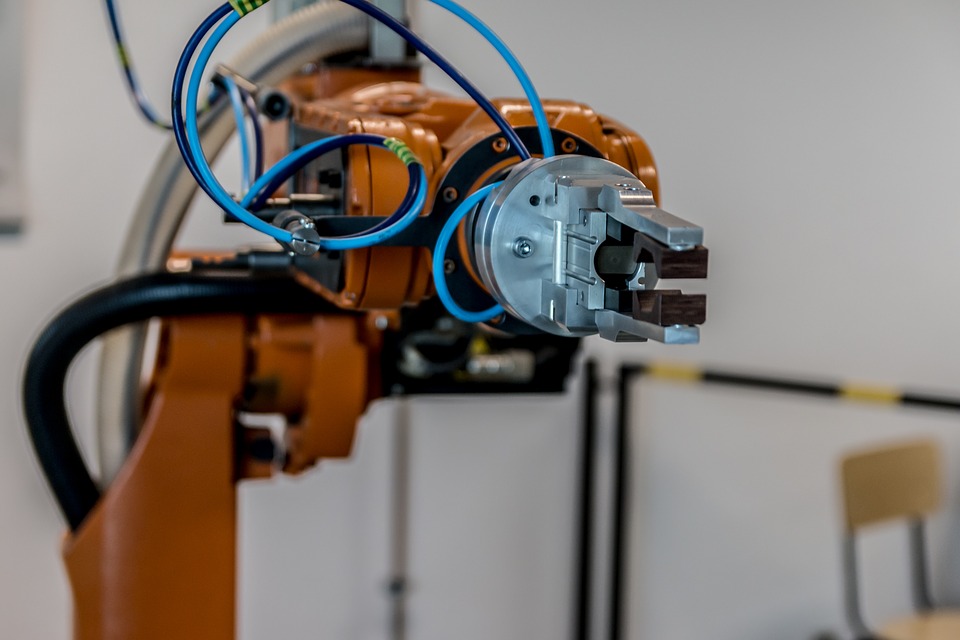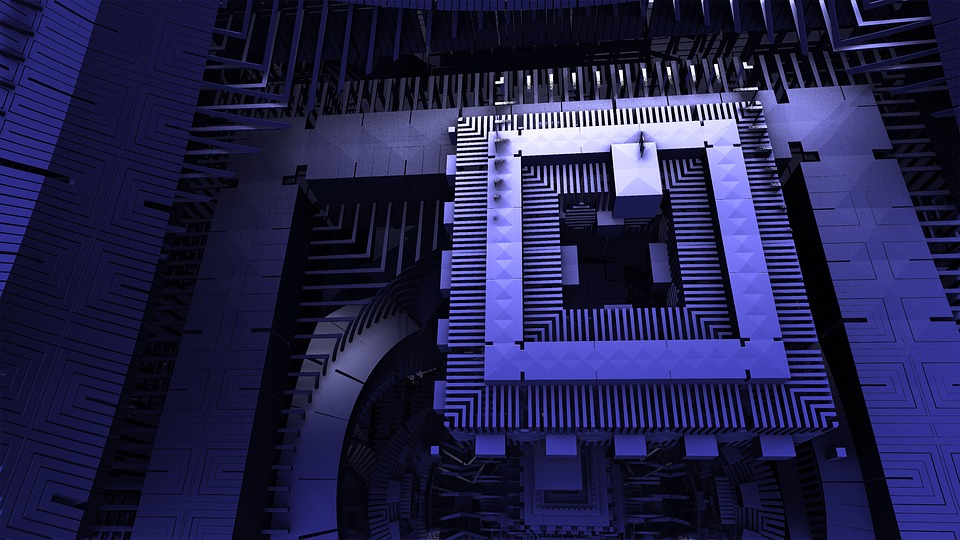We are living in an age of constant technological advancement. Every day, new and interesting technologies are being developed that have the potential to change the world. In this blog post, we will explore some of the most exciting and innovative technologies that are currently in development. From self-driving cars to artificial intelligence, these technologies have the potential to revolutionize various aspects of our lives. So without further ado, let’s take a closer look at some of the most exciting new technologies that are on the horizon!
Table of Contents
Mind-Reading Robots

Mine reading robots are no longer in fiction. They can interpret human thoughts and emotions. These robots are equipped with sensors that can track the electrical signals of the brain. By analyzing these signals, the robots can decipher what a person is thinking or feeling.
This technology has the potential to be used in a variety of applications, such as helping people with disabilities or helping to improve human-robot interaction.
In recent years, advances in robotics and brain-computer interfaces have given rise to a new generation of prosthetic devices. These devices are designed to provide amputees with greater mobility and independence. However, the challenge with developing prosthetic devices is that they must be able to accurately interpret signals from the brain. Now, researchers at MIT have developed a robot arm that can do just that.
The robot arm is equipped with an algorithm that interprets signals from the brain using an EEG cap. This allows the arm to automatically determine when it has made a move that the brain considers incorrect. For example, if the arm moves too close to an obstacle or goes too fast, the algorithm will send a signal to the robot to correct its course. In tests, the robot arm was able to successfully navigate around obstacles and complete simple tasks, such as picking up objects.
This research represents a significant step forward in the development of prosthetic devices. The ability of the robot arm to accurately interpret signals from the brain could potentially enable amputees to regain full use of their limbs. In the future, this technology could be used to develop prosthetic devices that are even more lifelike and functional.
AI-Optimized Manufacturing
In today’s competitive marketplace, companies are always looking for ways to optimize their manufacturing processes. One area that is ripe for optimization is the use of data. With the advent of cloud-based technologies, companies are now able to aggregate data from multiple sources and then use artificial intelligence (AI) to intelligently transform and present that data in a way that is contextual and informative.
This is especially useful in the manufacturing sector, where having accurate and up-to-date information about production lines can be the difference between success and failure. By using AI-optimized manufacturing technologies, companies will be able to gain a significant competitive advantage.
This shift will be driven by the need to optimize product quality and cost while shortening product lifecycles and increasing competition. Cloud-based solutions will enable companies to gain real-time insights into their manufacturing processes, identify potential quality issues early, and quickly adjust production plans accordingly. The result will be a more agile and responsive manufacturing sector that is better able to meet the ever-changing needs of consumers.
3D Printed Bones
3D printing is the process of creating three-dimensional objects from a digital model. 3D printing has been used to create a wide variety of objects, ranging from medical implants to airplanes.
Recently, scientists have begun using 3D printing to create bones. This process involves printing a bone-like scaffold using a 3D printer. The scaffold is then coated with stem cells, which will grow and form bone tissue.
3D printing is revolutionizing the medical industry, and Ossiform is at the forefront of this cutting-edge technology. Specializing in patient-specific bone replacements, Ossiform creates 3D printed implants from tricalcium phosphate – a material with similar properties to human bone. This means that Ossiform’s implants are not only highly effective but also much less likely to be rejected by the patient’s body.
The process of using Ossiform’s implants is surprisingly easy. First, a hospital performs an MRI which is then sent to Ossiform. Ossiform then creates a 3D model of the implant that is needed. The surgeon accepts the design and then once it is printed, it can be used in surgery. This revolutionary technique is changing the way we treat patients with bone injuries, and Ossiform is leading the way.
This technology can be used to create custom bones for people who need surgery or who have lost bone tissue.
3D Printed Dairy Products
Realistic meat-free alternatives have been on the rise in recent years, as more and more people look to reduce their consumption of animal products. However, these plant-based meats often lack the taste and texture of the real thing. That’s where cultured meat comes in. By growing animal cells in a laboratory, it’s possible to create meat that is identical to the real thing – right down to the DNA. And while cultured meat is still in its early stages of development, a number of companies are already working on lab-grown dairy products.
So far, the results are promising. One company has developed a method for growing milk without cows, and another has created an egg substitute made from plant proteins. These products are not only environmentally friendly but could also be healthier than their traditional counterparts. For example, lab-grown milk could be fortified with nutrients and free from harmful antibiotics and hormones. Similarly, egg substitutes could be made without cholesterol or saturated fats.
Of course, cultured meat and dairy products are still some way off from being available to consumers. But as the technology continues to develop, it seems likely that these lab-grown foods will eventually find their way onto our plates.
This technology can be used to create dairy products that are free of lactose or cholesterol. It could also be used to create dairy products that are more environmentally friendly, as they would not require the use of cows.
Quantum Computing

In the early days of quantum computing, theorists and experimentalists alike were mostly focused on demonstrating the basic principles of quantum information processing. In recent years, however, there has been a shift towards developing practical quantum algorithms that could one day be implemented on real devices. This is an exciting time for quantum computing, as we are beginning to see the first signs that this technology may soon outgrow its infancy and be able to tackle meaningful, real-world problems.
This new kind of computer can be used for simulations of complex chemical reactions. This will help us develop drugs in new ways. For example, quantum computers could be used to simulate how a potential new drug molecule interacts with proteins in the body. This information is essential for designing safe and effective drugs, and quantum computers could help speed up the process.
By understanding the quantum behavior of atoms and molecules, scientists can develop more efficient and environmentally-friendly catalysts. In sum, this new type of computer has the potential to revolutionize many areas of science and industry.
Hydrogen Planes
Hydrogen planes are a new type of aircraft that run on hydrogen fuel cells. These planes produce zero emissions and are much quieter than traditional aircraft. Hydrogen planes have the potential to revolutionize air travel, making it more environmentally friendly and efficient.
A number of companies are already working on developing hydrogen planes. The Aerospace Technology Institute in conjunction with the UK government has just unveiled plans for a hydrogen-powered plane as part of a £15 million UK project. The project, known as Fly Zero, has come up with the concept of liquid hydrogen as the main power for a mid-sized plane.
This technology could mean that people can fly halfway around the world without stopping. This would be a zero-carbon flight with no stops between London and Western America or London to New Zealand.
This would be an incredible achievement not just for the team behind Fly Zero, but for everyone working to reduce our carbon footprint. We can only hope that their concept comes to fruition and we see hydrogen-powered planes taking to the skies in the near future.
Economy Boost with 5G
The next generation of mobile technology, 5G, is set to bring a number of benefits to our economy. 5G will enable faster data speeds and better connectivity, which will boost productivity and efficiency in many industries.
In particular, 5G will be a boon for the logistics and transportation industries. With 5G networks in place, connected directly to autonomous robots, items may be delivered securely within hours. With faster data speeds, companies will be able to track their vehicles and shipments in real-time, which will help them to optimize routes and avoid delays. 5G will also enable autonomous vehicles to communicate with each other and with infrastructure, making our roads safer and reducing traffic congestion.
The introduction of 5G will also lead to the development of new and innovative services and applications that we cannot even imagine today. This new technology has the potential to change our lives and the way we do business in a number of ways, and we are only just beginning to scratch the surface of its potential.
Digital Twin Technology
Digital twin technology is a new way of tracking our health. This technology creates a digital copy of our bodies that can be used to monitor our health and detect any problems early.
Digital twin technology is already being used in the healthcare industry. For example, one hospital in the UK is using digital twins to help plan operations and track the progress of patients post-surgery. This allows doctors to see how each patient is recovering and make any necessary adjustments to their care plan.
This technology has the potential to revolutionize healthcare. By detecting problems early, digital twins could help us to avoid serious health complications down the line. In addition, this technology could be used to customize treatments for each individual patient, based on their unique digital profile.
This is just one example of how digital twin technology can be used. This technology also has the potential to be used in other industries, such as manufacturing, construction, and even city planning.
Green Funerals
Green funerals are a new way of burial that is more environmentally friendly. With green funerals, bodies are buried without coffins in natural burial grounds. This allows the body to decompose naturally, which is better for the environment.
In addition to being more environmentally friendly, green funerals are also often cheaper than traditional funerals. This makes them a more affordable option for many people.
Green funerals are becoming increasingly popular as more people look for ways to be more environmentally responsible. If you are interested in having a green funeral, there are a number of funeral directors that offer this service.
VR World
With the release of Metaverse, a new virtual reality world, people will be able to visit different universes and explore them in ways never before possible.
Metaverse is a social platform that allows users to create their own avatars and interact with other users in a virtual world. This world can be customized to look however you want it to, and there are no limits to what you can do or explore.
This is just the beginning of what VR worlds can offer. In the future, we will see more and more VR worlds being created, each with its own unique features and experiences.
As VR technology continues to develop, we will only see more amazing and innovative uses for it.
Internet for Everyone
One of the most important technologies of the future is the internet. Unfortunately, not everyone has access to the internet. This is a problem that needs to be solved so that everyone can enjoy the benefits of this technology.
As more and more people around the world come online, the issue of internet accessibility has become increasingly important. There are a number of initiatives that are working to provide internet access to everyone. While companies like Google and Facebook have made headlines with their ambitious plans to deliver the internet to remote areas using balloons and drones, smaller startups are taking a different approach.
Hiber is one company that has launched a network of microsatellites into low Earth orbit in order to provide internet access to people in remote areas. When the satellites pass overhead, they wake up a modem that is plugged into the user’s computer or device, delivering data. This innovative approach is helping to close the digital divide and ensure that everyone has access to the internet.
Faster Charging Batteries
As electric cars become more popular, the demand for faster-charging batteries is increasing. Currently, the best way to charge an electric car is to plug it into a wall outlet. However, this can take several hours.
Faster charging batteries would allow electric cars to be charged in a matter of minutes, making them much more convenient to use. This technology is still in its early stages of development, but there are a number of companies working on it. In the future, we may see electric cars that can be charged as quickly as gas cars.
Lithium-ion batteries are an essential part of many modern devices, from cell phones to laptops to electric cars. However, rapid charging of these batteries can degrade their performance over time. Scientists have found a way to prevent batteries from overheating. They discovered that if the battery is heated up to 60°C for 10 minutes and then quickly cooled down again, the battery will not overheat.
This simple treatment could extend the lifespan of lithium-ion batteries, making them more reliable and affordable in the long term. The research team tested their theory by heating lithium-ion batteries to 60°C and then rapidly cooling them. They found that the heat treatment was effective in preventing the formation of lithium spikes. The team believes that this method could be used to improve the lifespan of lithium-ion batteries.


